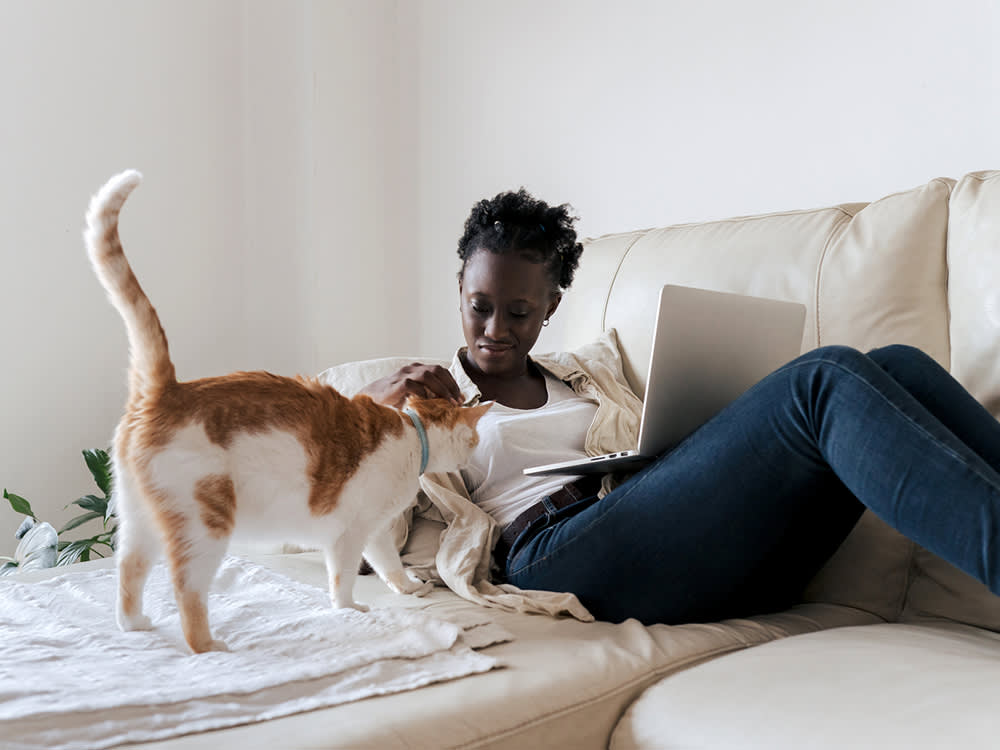Your Cat Can Read the Room Better Than You Think
A new study finally confirms what pet parents already know: cats are great communicators.
Cats have a reputation of being the less communicative pets in many households, but recent research shows that may not be the case. In fact, there is evidence that cats are taking social cues and paying attention to our behaviors as much as dogs — okay, almost as much as dogs. A study published in Animal Cognitionopens in new tab found that the “social cognition capability of domestic cats may have been underestimated.” In other words, they can read the room better than they’ve previously been given credit for and aren’t above asking humans for help.
“Our study is the first to investigate how a caregiver’s attentional state affects human-directed communication behavior in cats when facing a solvable task (easily accessible treat) and an unsolvable task (inaccessible treat),” said Dr. François Martin, PhD, and co-author of the study. In the first part of the experiment, the cat was presented with a treat in a container with an open lid. In the second, the container’s lid was closed, but the cat’s caregiver was cheering them on from the sidelines. The researchers found that “the attentional state of the human very much influenced the cats’ behavior during these tasks.”
Save on the litter with color-changing tech that helps you better care for your cat.
With the solvable task, cats easily figured out how to access the treat themselves. But in the unsolvable task, they communicated their intention to their pet parent, like repeatedly looking at the treat and then at the person, seeking attention and help in reaching the treat. Interestingly, not only did the cats “ask” for help, but they also modified their behavior depending on the availability of the person. When the person was paying attention to them, the cats were more engaged (looking at them sooner and approaching the treat container more often); yet when caregivers weren’t paying attention, the cats adjusted their strategy.
“The idea for this research came from me attending a scientific conference where one of the speakers was explaining that, contrary to dogs, cats are not very good at intentionally providing information to humans when they want something they cannot get by themselves, for example treat in a box,” said Dr. Martin. This didn’t ring true to Dr. Martin as the cats he knew were actually pretty good at signaling what they want. “So our results confirmed what my feline buddies had shown me over the years.”
How much do you spend on your pet per year?
There are a number of reasons why cats are more challenging for researchers to study than dogs. “Dogs are a more social species compared to cats,” explained Dr. Martin. “The ancestors of domestic cats mostly live a solitary life [unlike wolves], so dogs’ signals to others, including humans, are more obvious — it makes them easier to observe and measure.” He added that there is a limited amount of funding allocated to researching cat and dog behavior, with most of those funds going to man’s best friend.
There’s no need to wait for the latest study to try to decipher what your cat is trying to tell you. “In order to engage with their cats, [pet parents] can provide them with puzzle feeders or treat dispenser toys and watch for communication signals such as gaze alternations (when the cat looks at them and then back at the puzzle) when the cat is trying to figure it out,” Dr. Martin suggested. “If they observe these signals, it is likely that the cat is probably trying to tell them that they need help.”







